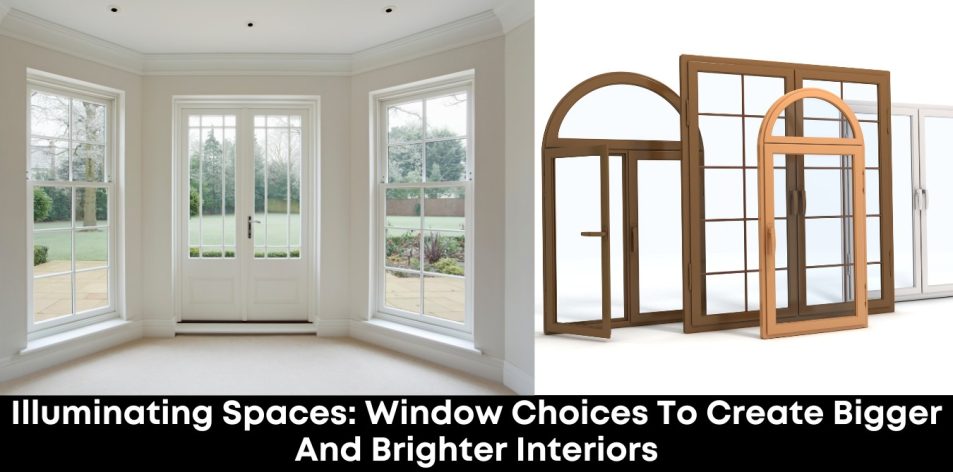Maximising Natural Light and Visual Expansiveness in Home Design
Windows are far more than just openings in a wall; they are pivotal elements in home design that profoundly influence natural light, ventilation, and the perceived size and mood of an interior space. For those looking to make a room feel more expansive and filled with light, strategic window selection is key. This article explores various window types that can be incorporated into your design to create the illusion of greater space and a brighter, more open atmosphere.
Understanding How Windows Create Space and Brightness
Windows achieve this effect by:
- Maximising Natural Light: More light makes a room feel open and airy.
- Providing Views: Connecting the interior with the exterior landscape visually extends the room.
- Creating Visual Flow: Uninterrupted expanses of glass reduce visual barriers.
Window Types for Enhanced Space and Brightness
1. Large Picture Windows
These are large, fixed panes of glass that do not open. Their primary purpose is to provide an expansive, unobstructed view and maximise natural light. They act like a framed piece of art, showcasing the outdoors.
- Benefit: Offer the most dramatic visual expansion, especially when overlooking a garden or scenic view. Flood the room with light.
- Ideal For: Living rooms, dining rooms, master bedrooms where a significant view is desired and ventilation isn’t the primary concern.
2. Floor-to-Ceiling Windows (or Glass Walls)
Taking the concept of picture windows further, these extend from the floor almost to the ceiling, sometimes even spanning an entire wall. They effectively dissolve the boundary between indoors and outdoors.
- Benefit: Create an incredible sense of openness, bringing the outside in and making rooms feel significantly larger and brighter.
- Ideal For: Modern homes, open-plan living areas, or rooms with direct access to a patio or garden. Consider shading solutions for privacy and heat control.
3. Bay and Bow Windows
These windows project outwards from the main wall of the house, creating an alcove within the room. Bay windows typically have three flat panels, while bow windows feature a more curved, arc-like design with multiple panels.
- Benefit: Add architectural interest, create a sense of depth and extra floor space, and allow light to enter from multiple angles, making the room feel larger and brighter. They often create a cosy nook.
- Ideal For: Living rooms, dining areas, or bedrooms where you want to add character and expand the feeling of space.
4. Casement Windows
These windows are hinged at the side and open outwards like a door. They offer excellent ventilation and can provide clear, unobstructed views when open.
- Benefit: Their full opening capability allows for maximum airflow and can offer a relatively unobstructed view compared to double-hung windows. When closed, their simple design allows for large glass panes.
- Ideal For: Almost any room where good ventilation and a clean aesthetic are desired.
5. Clerestory Windows
These are windows placed high up on a wall, typically near the roofline. They are often narrow and long, installed above eye level.
- Benefit: Bring in abundant natural light without compromising privacy, especially useful in urban settings or bathrooms. They draw the eye upwards, enhancing the perceived height and spaciousness of a room.
- Ideal For: Bathrooms, hallways, high-ceilinged living areas, or any space where privacy is a concern but light is needed.
6. Skylights
Installed on the roof, skylights bring light directly from above. They are incredibly effective at brightening interior spaces, especially those that lack sufficient wall space for traditional windows.
- Benefit: Flood a room with natural overhead light, making even the darkest corners feel bright and open. They create a dramatic effect and enhance a sense of spaciousness by drawing the eye upwards.
- Ideal For: Kitchens, bathrooms, hallways, stairwells, or any room that feels dark or enclosed.
7. Corner Windows
These are windows that meet at the corner of a room, often without a traditional corner post, creating a seamless glass expanse.
- Benefit: Offer panoramic views and allow light to stream in from two directions, significantly opening up the corner of a room and making the space feel more dynamic and expansive.
- Ideal For: Modern architectural designs, living areas, or bedrooms where maximising views and light at a corner is desired.
Design Tips for Maximising Light and Space with Windows
- Minimal Frames: Opt for windows with thin frames or concealed frames to maximise the glass area.
- Cleanliness: Keep windows sparkling clean to allow maximum light penetration.
- Light-Coloured Interiors: Light-coloured walls, ceilings, and floors will reflect natural light, making the room feel even brighter and larger.
- Strategic Placement: Consider how natural light moves throughout the day and place windows to capture the best illumination.
- Mirror Placement: Position mirrors opposite windows to reflect light and views, further enhancing the sense of space and brightness.
Illuminating Your Home’s Potential
By thoughtfully integrating these window types into your home design, you can transform ordinary rooms into bright, expansive, and inviting spaces. Harnessing the power of natural light and strategic views is a fundamental approach to creating a home that feels open, airy, and truly uplifting.

